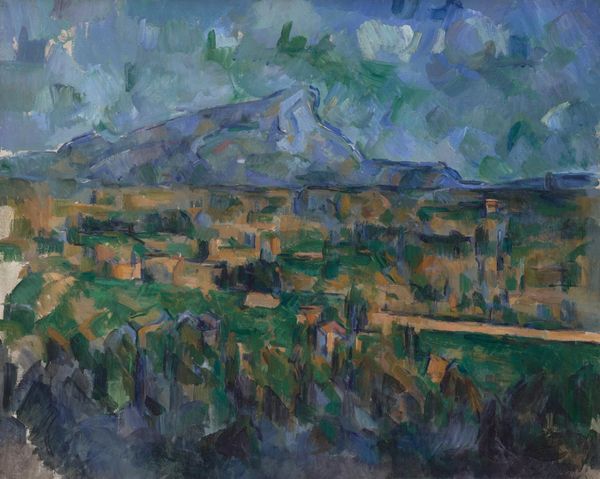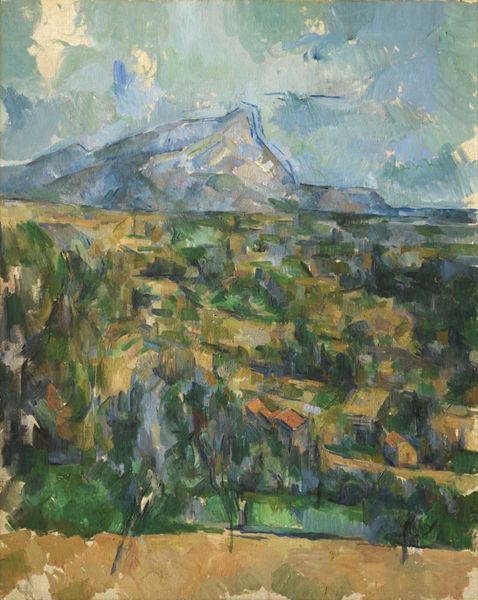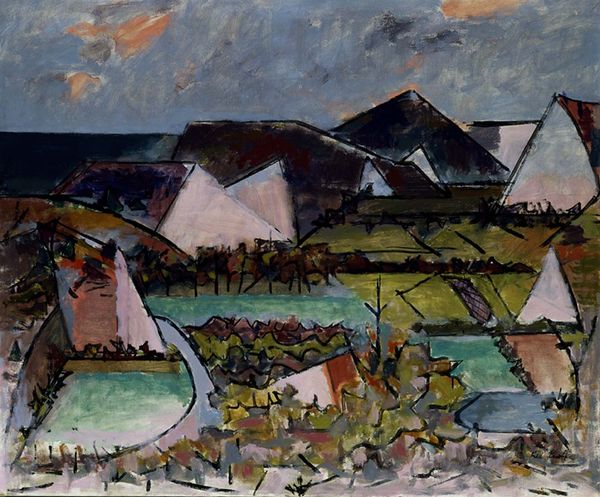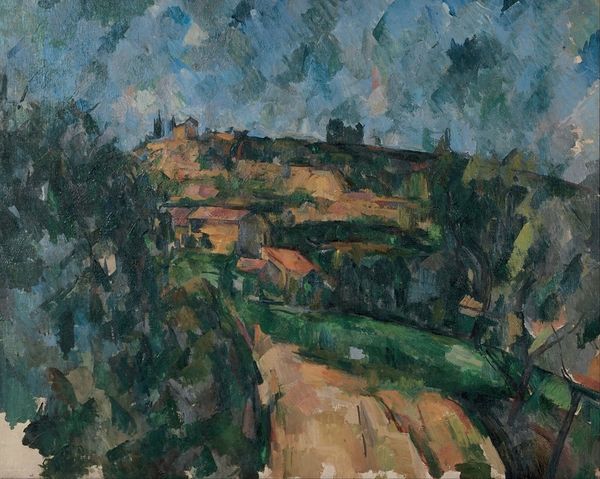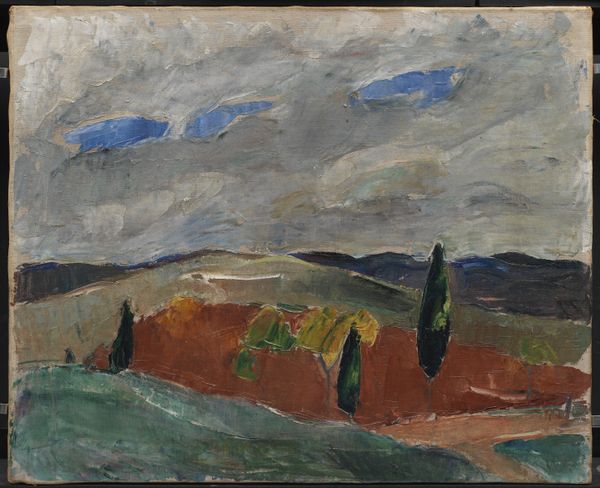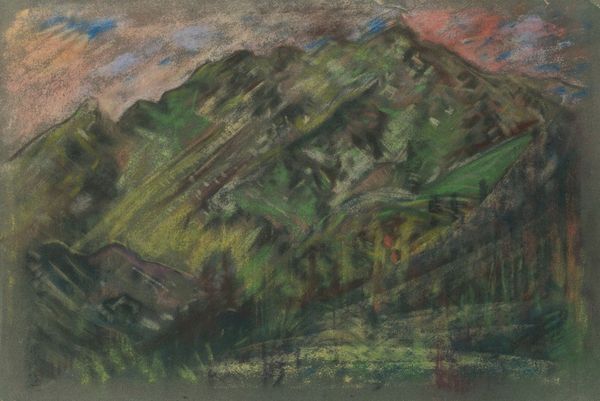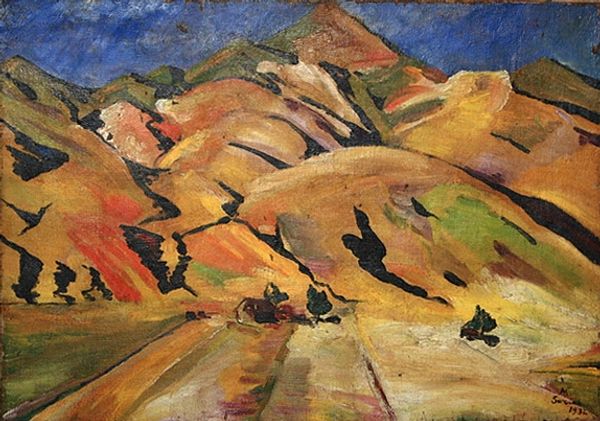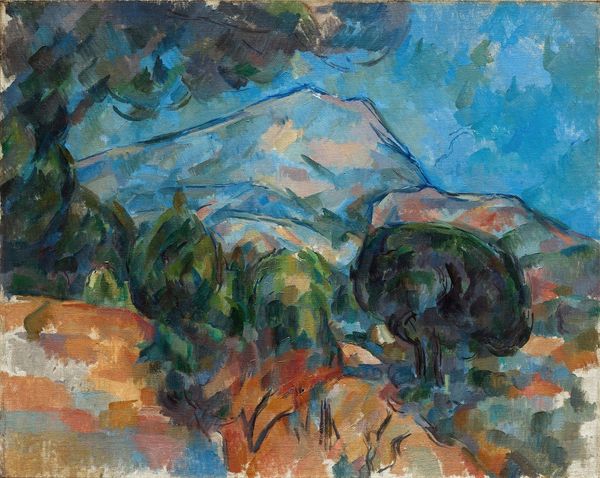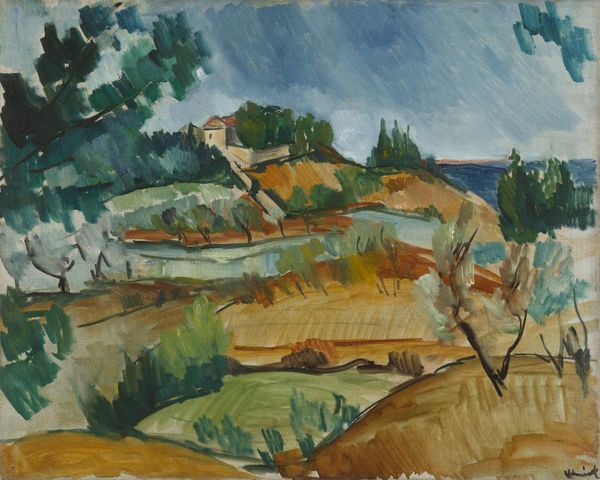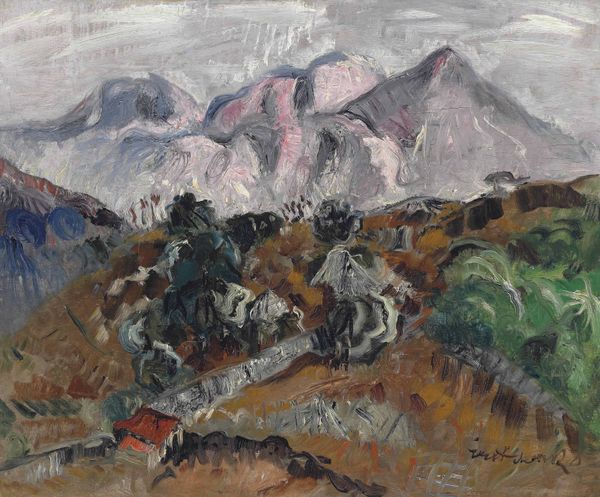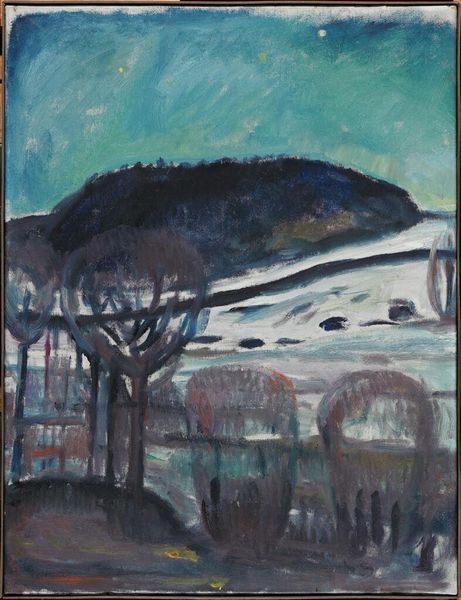
Copyright: Alexis Gritchenko,Fair Use
Curator: Before us is "Three Cypress Trees," a painting by Alexis Gritchenko, completed in 1956. It's an oil-on-canvas work that exemplifies post-impressionist landscape traditions. Editor: The somber tone immediately strikes me, the moody sky weighing heavily above the fields. There is a thickness of paint that adds a tactile quality to the work, even from this distance. Curator: Absolutely. Gritchenko was deeply engaged with capturing the essence of a place, both its physical appearance and its emotional resonance. As a Ukranian artist working across Europe, Gritchenko continuously dealt with identity. Consider this as not just a landscape, but also as a place where national and personal identity meets and questions assumptions of representation. Editor: It feels like the painting foregrounds process over illusion. Look at the materiality of the oil paint – how Gritchenko applies it almost sculpturally, it becomes almost about the field and less a mimicry of one. The repetitive patterns hint at the labor inherent in the agricultural landscape. Curator: And notice those three dark cypress trees in the foreground, anchoring the scene, drawing our eye up toward the stormy sky. They stand as sentinels or perhaps as witnesses, offering a symbolic counterpoint to the cultivated land. Cypress trees have rich religious associations that further enrichen this idea. Editor: Right, it invites us to ponder the contrast between human intervention and the more elemental forces of nature, both literally at ground level and metaphorically above, through its heavy clouds. I am also drawn to what I feel is the social relations that are made clear in fields that represent working grounds where human intervention makes a powerful commentary in the piece. Curator: The dynamic brushwork and the somewhat muted palette contribute to the painting’s sense of restless energy. Gritchenko paints this work with what you've said: The relations, labor and national connections and his emotional attachment and experience to those ideas. The tension gives us a compelling statement about Gritchenko's position as a diasporic artist working in Post-War Europe. Editor: Ultimately, this is how our understanding of "Three Cypress Trees" as an oil painting gives way to other types of considerations on history, and also class, given Gritchenko's own economic background. Curator: Yes, and how important to highlight and historicize our interpretations when experiencing works of art. Editor: This work stays with me, beyond just its aesthetic beauty.
Comments
No comments
Be the first to comment and join the conversation on the ultimate creative platform.
